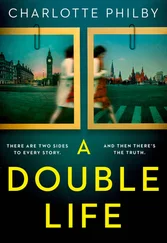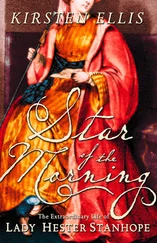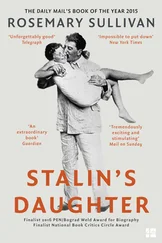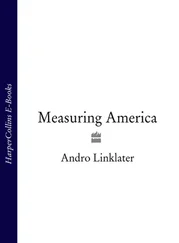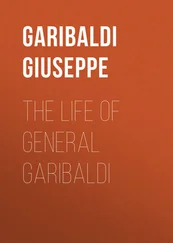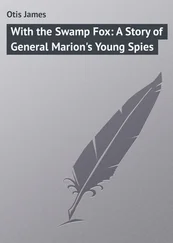Wilkinson came at the head of the brigadier generals—his brevet rank dating from November 1777 gave him seniority over those promoted later—and the president’s opinion was curiously brief: “As he was but a short time in Service, little can be said of his abilities as an Officer. He is lively, sensible, pompous and ambitious; but whether sober, or not, is unknown to me.” In public at least, not a word was said of his failings as clothier general, or of the allegations of conspiracy leveled at him. But from Jefferson, who jotted private notes of cabinet meetings, came the suggestion of a deeper discussion of his background. Wilkinson was deemed to be “brave, enterprising to excess, but many unapprovable points in his character.” Among those points were presumably the doubts aroused by his Spanish connections.
At the end of March, while Wilkinson was still waiting to hear the results of the president’s deliberations, Nancy and the boys joined him at Fort Washington, and the Kentucky Gazette soon reported that in the colonel’s “schemes for adornment and social pleasure he was ably and cordially seconded by his wife.” There was not much to choose between Louisville and Cincinnati in terms of population, but Nancy’s preference was always to be with her husband. And for the first time since they came out to the frontier, his regular salary and access to government transport opened up the long-deferred chance to see her family in Philadelphia again.
In the winter of 1789, her beloved father had died, but anxiety about the future of her children still made her long to return east. In one of her last letters to John Biddle, she had confessed, “I regret much, indeed it grieves me, that they have not an Opportunity of going to a good School. However I pay every attention to there Learning that my Domestic affairs will admit off; John Reads Prettily, James Spells, but he is so heedless that it is with difficulty I can prevail on him to say a lesson.”
In Kentucky, she had to make do with what they could learn from “a Poor Simple looking Simon who told me he was taught [in Philadelphia] which prejudiced me in his favor & I concluded he could not learn them bad Pronunciation; at any rate it was better than running about the Streets.” The schooling available in Philadelphia, however, would smooth away the frontier roughness she fought against. In July, before the river dropped and cut off access to the east, she and the boys boarded an army boat and headed upstream to civilization. Looking after them was Lieutenant William H. Harrison, later president of the United States, who had been detailed “to accompany Mrs Wilkinson to Philadelphia” by the new commander in chief of the Legion, Major General Anthony Wayne.
The president had made the appointment on April 9. On the same day Wilkinson received a consolation prize of promotion to brigadier general, and with it the assurance that he would be second-in- command. Later in the summer, Knox sent the president a note: “Brigadier Wilkinson’s attention to all parts of his duty and his activity render him a great acquisition to the public.” To this Washington immediately replied, “General Wilkinson has displayed great zeal & ability for the public weal since he came into Service— His conduct carries strong marks of attention, activity, & Spirit, & I wish him to know the favorable light in which it is viewed.” The compliment was deserved, but it was also intended to soothe Wilkinson’s wounded vanity.
IN DECEMBER 1791, Esteban Miró sailed for home, handing over the governorship of Louisiana to Baron Hector de Carondelet. Like Miró, Carondelet had been a soldier before joining the colonial service, but, Flemish-born and something of an outsider, he lacked his long-serving predecessor’s confident judgment. Small, portly, and fussy, he compensated by paying close attention to administrative detail— his modernization of the municipal government of New Orleans, and the introduction of street lighting and waste collection, left it a better- run and cleaner place. It was also more expensive for, as an anonymous official in Madrid sharply noted, “He has always shown a great predilection for new projects . . . without ever thinking of the funds or expenditures that such Projects naturally will cost.” During his administration the expense of running Louisiana rose to over $800,000 a year, while its revenues never amounted to more than $75,000, a disparity that would eventually force Madrid to look for cheaper ways of defending its silver-cored empire.
The flair in Carondelet’s administration came from the governor of Natchez district, Manuel Gayoso de Lemos. Miró, who was rarely deceived about character, judged that Gayoso “distinguished himself through his talent, knowledge of various languages and excellent conduct.” He was also artistic, emotional, and devoted to his family. Educated in England and twice married to American women, he had a cosmopolitan background that helped in the government of a fast-growing, volatile population of American, British, French, and Spanish settlers. Although most were concentrated around Natchez, others were scattered across much of modern Alabama and Mississippi, and Gayoso’s responsibilities included command of all the forts that stretched north along the Mississippi.
On July 5, 1792, he provided Carondelet with a report on the province he now governed, entitled “Political Conditions of the Province of Louisiana.” Ranging widely over the challenges presented by American settlers, British imperialists, and French revolutionaries, Gayoso picked out one unjustly neglected asset: “In Kentucky we have had Don Jaime Wilkinson well affected to our side. He is a person of great talent and influence, who has twice come down to this province and presented several memorials. In his own country he has performed several important services to this province. Yet although he was recommended by Don Esteban Miró for a pension and other help, the resolution was so long delayed because of the distance that separates us from the court [in Madrid] that in the meanwhile he lost his credit in Kentucky for lack of means to maintain it.” To retrieve his fortunes, Gayoso explained, Wilkinson had joined the U.S. army, but since his enlistment he had “suspended his correspondence with the governor at New Orleans and with me.”
Like many colonial reports, Gayoso’s was designed for reading back in Madrid as well as in New Orleans. In fact, as he knew well, Wilkinson was one of Carondelet’s top priorities. In February 1792, the new governor of Louisiana had sent the American a message informing him that the pension of two thousand dollars a year suggested by Miró had at last received royal approval, and that it was to be backdated to January 1, 1789. Should Wilkinson wish to resume his connection with New Orleans, Carondelet could promise that the sum of four thousand dollars was immediately available. Gayoso was still drawing up his report when, as he noted, a messenger, Michael La Cassagne, passed through Natchez on his way to New Orleans with a sealed letter from Don Jaime. Although he had not read its contents, Gayoso expressed his confidence that by the time his report was delivered, the governor of Louisiana would know whether Miró’s spy had been reactivated.
OF ALL THE CREDITORS pressing Wilkinson for money, La Cassagne was the most insistent. Having converted Wilkinson’s original loan to one involving his partner Peyton Short, the Frenchman had begun to squeeze both for payment. As La Cassagne’s vise closed, Short’s pleas for help from his partner became ever more desperate.
In December 1791, just before leaving for Fort Washington, Wilkinson put up his most valuable asset for sale, the town of Frankfort, with its strategic location, fine house, and ferry. His haggling over the price offered by Andrew Holmes, another Lexington storekeeper, brought a cry of pure anguish from Short. “To save me in this hour of extreme distress,” he wrote, “I now call upon you by every principle that ever warmed an honest heart. Both God and man can witness that you now have it in your power. I beg, entreat, and conjure you to avail yourself of the happy occasion— embrace the offer made you by Mr. Holmes.” To his relief, Wilkinson finally accepted Holmes’s price, three hundred thousand pounds of tobacco, in January 1792. Less than twelve months later, Kentucky’s legislature chose Frankfort as the site of the newly independent state’s capital. Land values quickly rose, and the fortune that Wilkinson always dreamed of passed instead to Holmes, and soon afterward to his creditors.
Читать дальше



